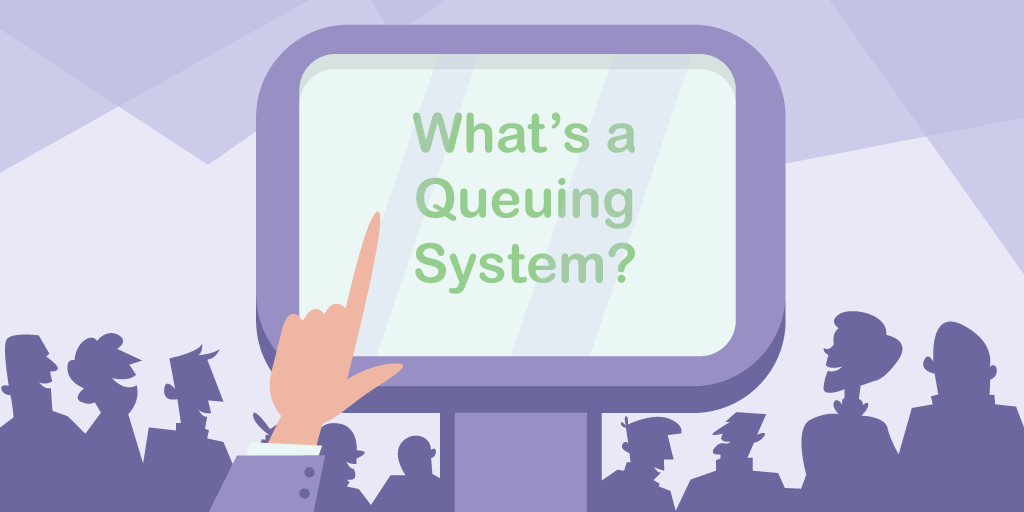Designing a strategy for making customers fall in love with your business brand can be a bit tricky.
Have you ever heard this phrase: “People don’t buy things for logical reasons; they buy for emotional reasons”?
Love is something that often defies logic. This doesn’t mean that you can’t approach it with an analytical mindset, but true emotions cannot be emulated.
Making customers fall in love with your brand doesn't rely on you simply closing a sale. It's often about making your customers feel a certain way.
To help you win affection and increase customer engagement, we've compiled a list of 11 ways to make customers fall in love with your brand.
Get your groove on just in time for Valentine's Day!
1. Be customer-centric
The first advice for making customers fall in love with you business is easy: be customer-centric.
But what is customer-centricity and why is it so important?
Look at it this way: having your service or products focus only on the how and what is like trying to build a house from the roof down.
Your first question should be why — as in, why customers might need this? How can we make their life more convenient?
By answering these questions, you can understand your customers a bit better.
The shift from a product-centric business to a customer-centric business leads not only to better customer relationships but also increased profits.
The fact is, 81% of companies who provide excellent customer experiences perform better than their competitors.
Why? Because treating your customers right by focusing on their specific needs and wants raises the chances of turning them into repeat customers.
Depending on which stufy you believe, acquiring a new customer can be five to 25 times more expensive than retaining an existing one.
Customer-centricity helps your decrease the customer churn rate, i.e. the percentage of customers who end the relationship with your business.
To sum up, the pillars of customer-centricity are:
Remove unnecessary friction customers' interactions with your business.
Focus on the benefits that your service and product can provide to your customers.
Improve the impression your brand leaves during the awareness and consideration phases.
Gather customer data and capture customer feedback to better understand your clients.
Build a robust customer-centric culture by rewarding employees for meeting the needs of the customer.
Read more: What It Means to Be Customer-Centric
2. Understand the importance of friendly customer service
The quality of your customer service is essential to the long-term success of your company.
Sincerity, lack of condescension, accessibility and politeness are all things that customers look forward to when interacting with a business.
Here are a few numbers on why the quality of customer service is something we at Qminder underscore time and time again:
73% of customers say that friendly service is a factor that makes them fall in love with a brand.
On the other hand, 89% of customers have stopped doing business with a brand after experiencing poor customer service.
It’s important that shoppers feel secure, relaxed and fairly treated: 70% of customers base their buying experiences on how they feel they are being treated.
The end-goal is not only to have this warm, fuzzy feeling in your heart from bringing a bit of kindness into this world.
The results of upping your service game are quite tangible: 55% of customers would pay more for a better customer experience.
Creating friendly customer service depends a lot on cultivating great workplace culture. A good formula to keep in mind is, happy agents mean happy clients.
Read more: How to Deliver Excellent Customer Experience
3. Pay attention to the visual side
We’re not only talking about creating a more pleasant design for your waiting areas.
We're talking about a top-to-bottom overhaul of every visual element that your customers may experience when interacting with your brand.
Take, for instance, your digital presence.
48% of people say that web design is the top factor in determining the credibility of a business.
In general, more than 90% of buying decisions are influenced by visual factors. Color plays a huge role here, as it helps raise brand recognition by 80%.
Every visual touchpoint is an opportunity for to share your brand's story and values.
Read more: 7 Easy Tips to Make Customers Fall in Love With Waiting Rooms
4. Engage customers with two-way communication
A customer's needs and wants can be complicated and even contradictory. It varies on a case-by-case basis.
That's why it's so important to have a conversation with your customers.
You need to develop a habit of asking for customer input and capture feedback, making changes where warranted, and give credit where credit is due.
Thankfully, the digital era makes it possible to learn the opinion of your customers in a matter of seconds.
If there's a change in your policy, an upcoming price increase or discontinuation of some product, you need to involve your customers and learn what they think about it.
Of course, most people are non-confrontational. We don't like seeing things that challenge or disturb us, so it's tempting to only focus on the positive feedback.
However, responding only to positive opinions will hurt your business.
If you don't believe us, here's a fact: 57% of consumers say that a brand's failure to respond to negative feedback justifies cutting ties with that brand.
By responding to customer reviews, no matter what they say, you show that you are open to talk and value the opinion of other people.
A brand with a human face is a brand that stands out.
Read more: Customer Feedback as a Way to Great Customer Experience
5. Employ positive language
Words have power. Communication with customers isn't only about being crystal clear; it's about the attitude you have.
For example, the great customer service that’s so characteristic of Japan can actually be summed up and explained by 7 common Japanese customer service phrases.
Communicating with customers is half the battle won, but communicating with them right is another piece of the puzzle.
Brushing someone off, even unintentionally, is easier than you think when you don’t filter what’s coming out of your mouth.
Learn about and implement people-first language — a concept in communication that puts people first, literally.
For example, instead of "the disabled", it's better to say "a person with a disability". In lieu of "a confined customer", say "a customer who uses a wheelchair."
It can be a mouthful, sure. But the principle is to focus on the person, not their descriptive.
Another mistake you need to avoid is being too frank with a customer. At some point, it may cross the line and turn into straight-up rudeness.
In short:
Being rude? Prepare to get booed. Positive lingo? That’s a bingo.
Read more: 7 Powerful Customer Service Phrases You Need to Use
6. Provide better waiting experiences
I’m sure you all wondered, “Come on, when is Qminder going to talk about queue management?”
Well, you asked for it!
Waiting is something that every consumer experiences from time to time. But does this experience have to suck?
That's a rhetorical question.
Offering your visitors a better waiting experience is not some Herculean task.
Your customers don't expect you to be on the same level as the Ritz-Carlton luxury hotel. Exceeding their expectations even just a bit is already a great success.
For the most part, all it takes is choosing not to frustrate and bore the customers.
It’s a simple process:
Have a virtual queuing system in place.
Offer accurate wait time estimations.
Provide opportunities for entertainment and distractions.
Give freedom to roam the place via text message notifications.
Have clear digital signage so that people wouldn’t get lost.
Read more: 5 Easy Steps to Better Waiting Line Experience
7. Enable self-service
The concept of self-service is self-explanatory and self-evident.
Giving customers the means to take charge of their own service is a trend that keeps growing in popularity.
40% of consumers now prefer self-service to contacting a customer service clerk.
This can take the form of being able to find answers to the questions that are bugging you: 50% of customers consider it important to solve product or service issues themselves.
Or, self-service can be more encompassing: 70% of customers expect a company’s website to include a self-service application.
Self-service provides a few perks that traditional customer support simply cannot offer.
For one, it can greatly reduce service time, especially once customers get the hang of the available self-service options.
Secondly, this gives your customers a sense of self-agency.
When they take charge of their own service interactions, they develop confidence and trust in your products and services.
Read more: Helping Customers Help Themselves: The Benefits of Self-Service
8. Take advantage of omnichannel customer service
For today’s companies, it is incredibly important to talk to their customers, be it online, offline, via social media, etc.
Companies with a focus on omnichannel customer service retain an average of 89% of their customers, as compared to 33% for companies without such customer service.
It’s not enough to just provide omni-channel communication; it needs to be consistent, too.
Accenture found that 89% of customers get frustrated because they need to repeat their issues to multiple representatives. Moreover, 87% of customers think brands need to provide a more consistent experience.
Omnichannel communication is a way for businesses to achieve excellent customer service and provide consistent customer experiences across all platforms.
The demand for omnichannel experiences is going to keep growing from now on. The pandemic has taught previously indecisive customers how to shop and interact with businesses online.
The stats show that most of these new online shoppers liked the comfort of doing business remotely, which means their numbers will be increasing more and more.
If you truly want your business to succeed, you need to fully commit to omnichannel customer experiences.
Read more: Mastering Customer Loyalty in the Digital Era
9. Take care of your employees
Employee experience is a concept closely related to customer experience. Improving or decreasing the former affects the latter, and vice versa.
Here’s a few statistics on how and why empowering staff positively impacts your brand perception:
85% of promoters say staff were empowered to help them (29% of detractors say the same).
83% of promoters are happy with knowledgeable staff (55% of detractors say the same).
Moreover, the Temkin Group found out that the organizations who earned “good” and “very good” employee engagement ratings are also more likely to be regarded as the leaders in CX.
Caring for your customers and caring for your employees is practically one and the same.
If you want customers to fall in love with your brand, you need your staff to fall in love with it, first.
The shift from old-school employee engagement to employee experience has been happening across several industries.
It's driven by a number of factors:
Millennials want to be more involved in the life of companies they work at: from environmental concerns to wage gap, they want their workplace to reflect their values.
The talent hunt is getting harder every year, and employee experience is a factor that help you stand out as an employer.
Social media has made workplaces more transparent, often against companies' wishes. Negative interactions have the potential of going viral.
There are clear domino effects to employee engagement. Focusing on employee experiences not only improves absentee rates but directly impacts productivity and profitability.
Read more: Happy Employees Make Happy Customers
10. Be transparent with your customers
In customer service, just like in love, transparency is key.
Customers need to know that the way you conduct your business aligns with their ethical beliefs.
Trustworthiness comes from being ready to be forthcoming even about the less presentable aspects about your brand or service.
For some reason, businesses still aren't expected to admit their fault.
Whenever something bad happens, most of the time we're greeted with some corporate speeches, promises to "do better", and little else.
If the sales are dropping, we're mostly hearing it from financial news, not the brands themselves.
The companies that are being transparent stand out. It's easier to believe in their integrity and develop trust in their business when they don't use small print.
Even customer data collection, something that many companies do passively, is worth being honest about.
If the brand is forthcoming about its data retention policies, it's easier to trust them with your data.
When a company commits to tranparency, it puts an additional pressure to get order fulfillment, problem resolution and customer experiences right.
Oh, and don't forget about customer wait times — they're worth being transparent about, too.
Read more: 7 Insanely Powerful Strategies to Manage Customer Wait Times
11. Personalize your service
Brand personality is nothing without personalizing your brand’s service.
According to Accenture, 75% of consumers are more likely to purchase from a company that knows their name and recommends them products based on their purchase history.
Giving your customers suggestions based on their purchase history is a small, but crucial change that brought about the Netflix era of service. It’s not enough anymore to fulfill your customer’s wishes — you need to learn to anticipate them, to understand them on a deeper level.
And understand your customers on a deeper level, as well.
Even something as small of personalization as using your customers’ names is a huge step towards making your service stand out. Stop treating customers as if they are items on a conveyor belt.
Make time to connect with each and every customer, and before you know it, this connection will blossom into a full-blown relationship.
Read more: The Power of Using Customer Names
Not all customers who claim to love your brand are your significant others. Do check your followers for fake personas and bots.
You don't have to fall for the very first person who claims to love you. As mothers have claimed from the beginning of time, "the right one will come along the way" 😉



![Free Sign-Up & Sign-In Sheet Templates [PDF]](/static/img/cms-blog/44LPc9KSvoVha1N3Sh9FGc/improve-waiting-room-checklist.png)


